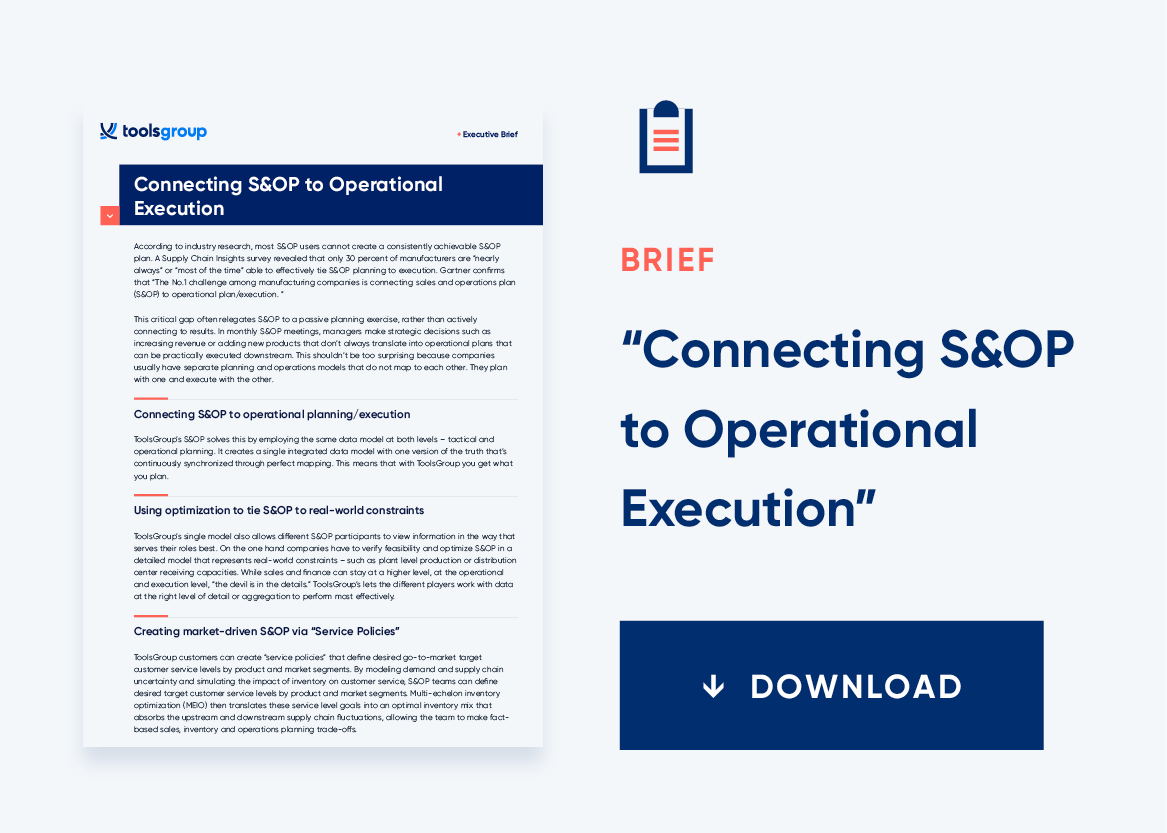Why S&OP Needs In-Memory Computing
Sales and Operations Planning (S&OP) or Integrated Business Planning (IBP) has a problem, and in-memory computing offers an answer.
Gartner says that, “The No.1 challenge among manufacturing companies is connecting S&OP to operational plan/execution.” There is a disconnect between:
- financial plans shaped around business and accounting processes,
- strategic plans modeled on aggregate sales and demand numbers,
- operational plans that need detailed item and location data down to the SKU level
Financial and strategic plans often lack the details required to make them meaningful to operations. “Operational plans are disconnected by different systems, manual spreadsheets and shadow processes that make it difficult to track operational details from all business domains within the overall plan,” explains a Gartner research note on in-memory computing.
Technology has impeded integrated business planning. S&OP commonly uses one or more separate data marts to plan on a periodic basis (typically monthly) at more aggregated levels of detail. At the same time, operational planning usually happens at a more granular level, with shorter time scales (often daily, hourly or even real time).
In-memory computing provides a new option to bridge this divide. Instead of complicated relational databases operating on comparatively slow disk drives, in-memory computing data sits in main memory, slashing information latency via faster access. RAM is roughly 5,000 times faster than traditional spinning disk. Add to the mix native support for parallel processing, and things get very fast.
So in-memory computing can accelerate information retrieval from a unified set of data at all levels of planning—strategic, operational, and execution—helping to sharpen decision making across the supply chain.
This type of integrated business planning supports more-agile, action-oriented planning. SCP solutions with in-memory computing enable trade-offs between demand, supply, inventory, and financial constraints, to balance business aims in a go-to-market strategy. A single, integrated model facilitates collaboration and optimization around a common scenario—including what-if algorithms to simulate proposed actions across the network to examine their impact. This what-if modeling is more useful to stakeholders in a collaborative environment, where they can quickly simulate and visualize alternatives on both the demand side (like price changes and new promotions) and supply side (capacity changes, activation of alternative suppliers, etc.).
In-memory computing can enable rapid comparisons between demand and supply allowing to set proper inventory buffers, capacity utilization rates and proposal quantities. By monitoring actual demand and supply numbers by line item, this operates as an early warning system so business stakeholders can adapt their plans and resources.
In-memory computing helps connect S&OP planning with operational execution. It enables unifying separate planning and operational models into a single, integrated data model with one version of the truth across tactical and operational levels, and continuous synchronization between plan and execution.







